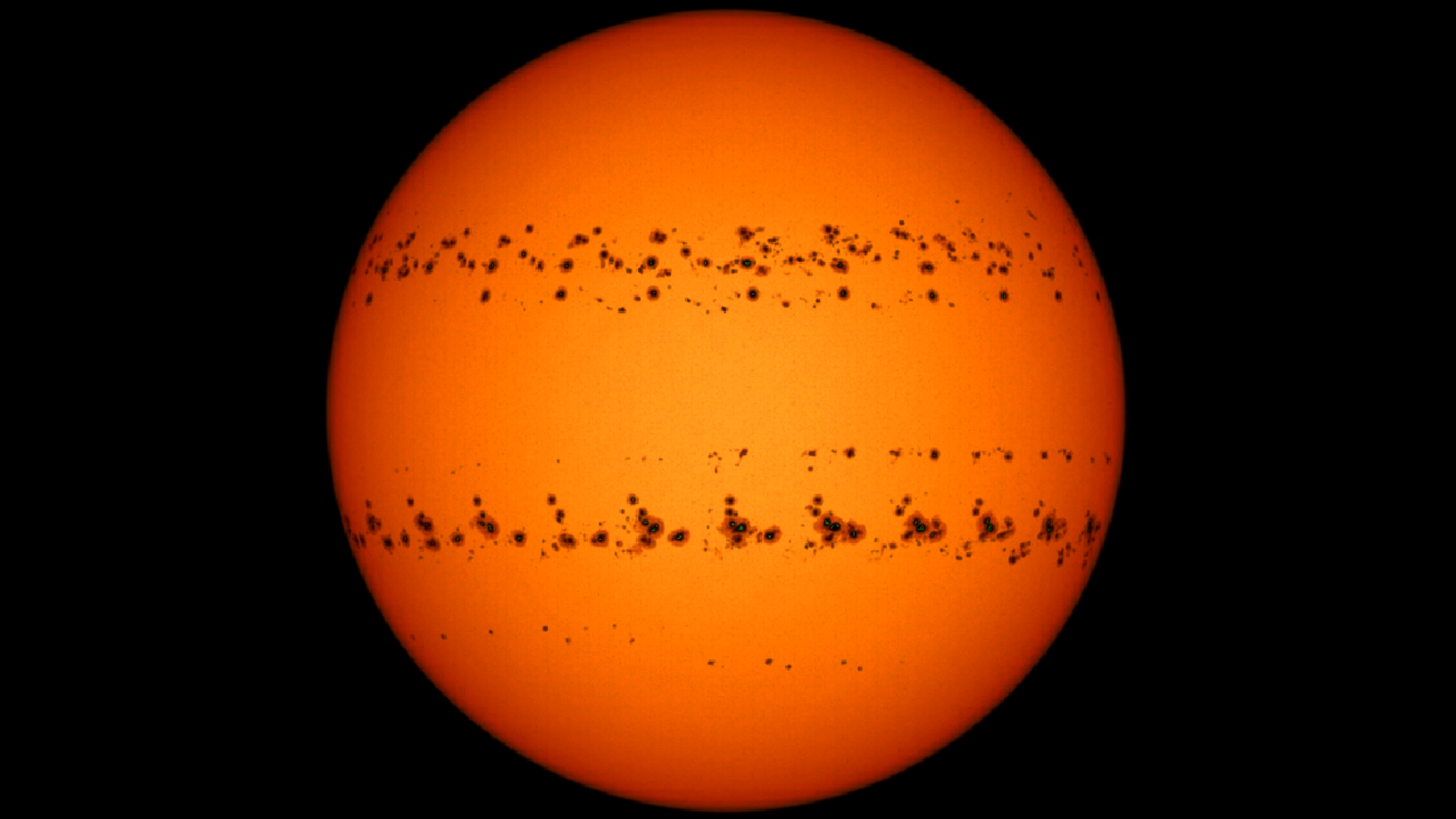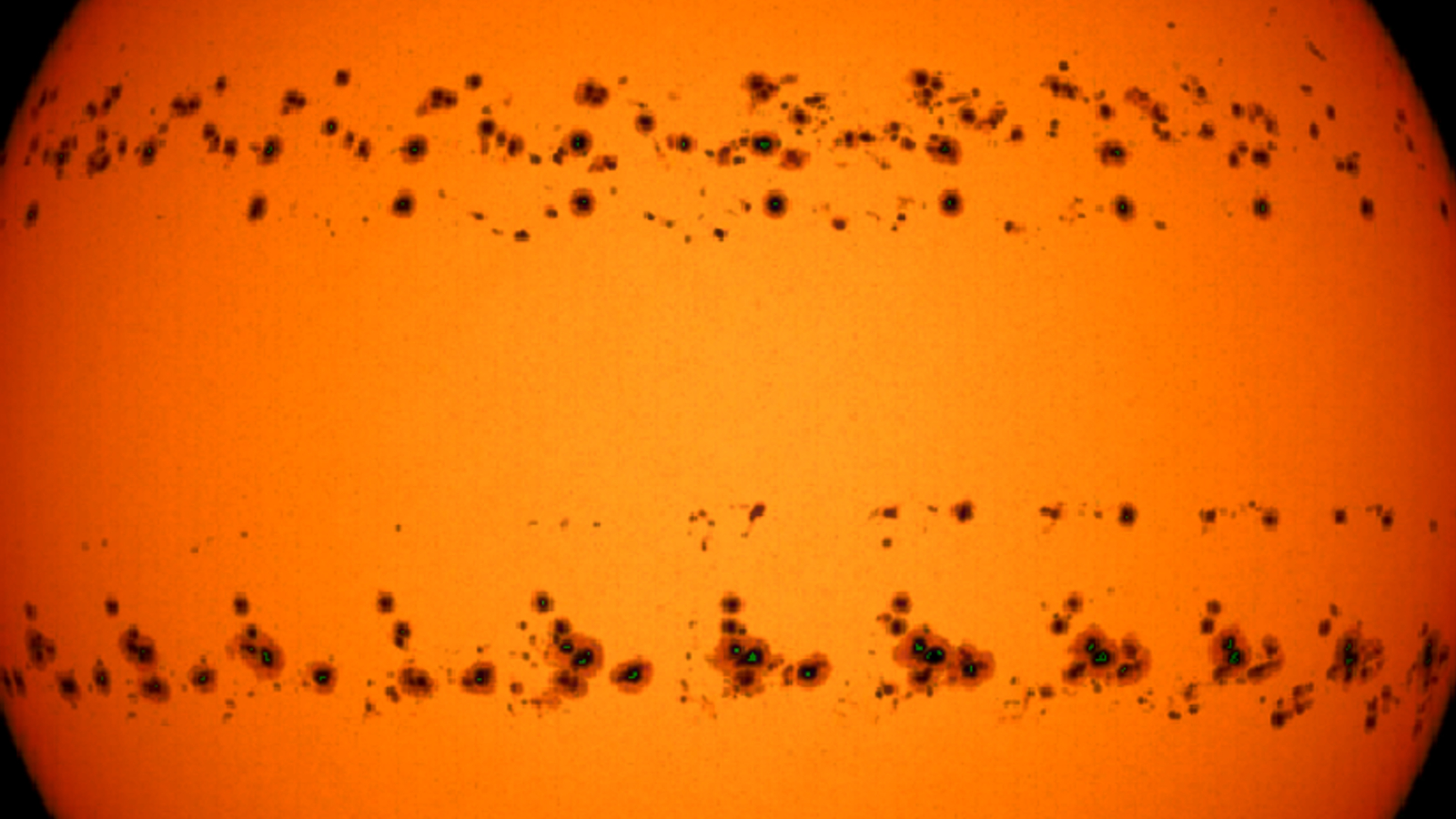Incredible time-lapse photo captures the sun during an 8-year sunspot peak
A new time-lapse image shows two major sunspot groups moving across the surface of the sun in December 2022, when the number of solar splotches also skyrocketed to an eight-year high.

A stunning new time-lapse photo shows two bands of shape-shifting sunspots moving across the sun's surface as our host star spins at the center of the solar system. When the mesmerizing image was captured, the total number of sunspots was at its highest in eight years, suggesting that solar activity is about to ramp up another notch.
Şenol Şanlı, an amateur astrophotographer based in Bursa, Turkey, created the new image using data from NASA's Solar Dynamics Observatory. The photo, which Şanlı shared on his Instagram account on Jan. 3, is a composite of individual snaps taken between Dec. 2 and Dec. 27, 2022. The two bands of evolving clusters in the image belong to a pair of particularly large sunspot groups: A3176, located to the north of the sun's equator; and A3153, in the sun's southern hemisphere, both of which moved from east to west (right to left in the image). Şanlı digitally removed other visible sunspots on the sun's surface from this period, allowing the observer to track the minute changes in the sunspot groups over time.
Sunspots are planet-size regions of the sun's visible surface, or photosphere, with increased magnetic fields. The spots are not actually black; they appear darker than the rest of the photosphere because they are much cooler than their surroundings. Scientists track these regions of strong magnetism because they can spit out potentially disruptive solar flares and coronal mass ejections (CMEs).
Related: Can sunspots affect the weather?

During December 2022, more than 113 sunspots were detected on the sun's surface — the most since December 2014, according to the National Oceanic and Atmospheric Administration's Space Weather Prediction Center. This total is a considerable increase compared with the rest of 2022, which had an average of 73.3 sunspots each month prior to December.
The sunspot increase is a result of the sun entering the more active phase of its 11-year solar cycle, which should peak in 2025. In 2022, scientists measured an increase in the frequency and strength of solar storms, and 2023 will likely be even more active if the number of sunspots remains high or increases further.
Several major solar storms have already erupted this year. On Jan. 3, a suspected X-class solar flare, the most powerful type of flare the sun can produce, exploded on the far side of the sun. Just three days later, the sun belched out a confirmed X-class flare from the same sunspot. And on Jan. 4, Earth's magnetic field was bashed by a potentially disruptive CME right as the planet reached its closest point to the sun, known as perihelion.
Sign up for the Live Science daily newsletter now
Get the world’s most fascinating discoveries delivered straight to your inbox.

Harry is a U.K.-based senior staff writer at Live Science. He studied marine biology at the University of Exeter before training to become a journalist. He covers a wide range of topics including space exploration, planetary science, space weather, climate change, animal behavior and paleontology. His recent work on the solar maximum won "best space submission" at the 2024 Aerospace Media Awards and was shortlisted in the "top scoop" category at the NCTJ Awards for Excellence in 2023. He also writes Live Science's weekly Earth from space series.









